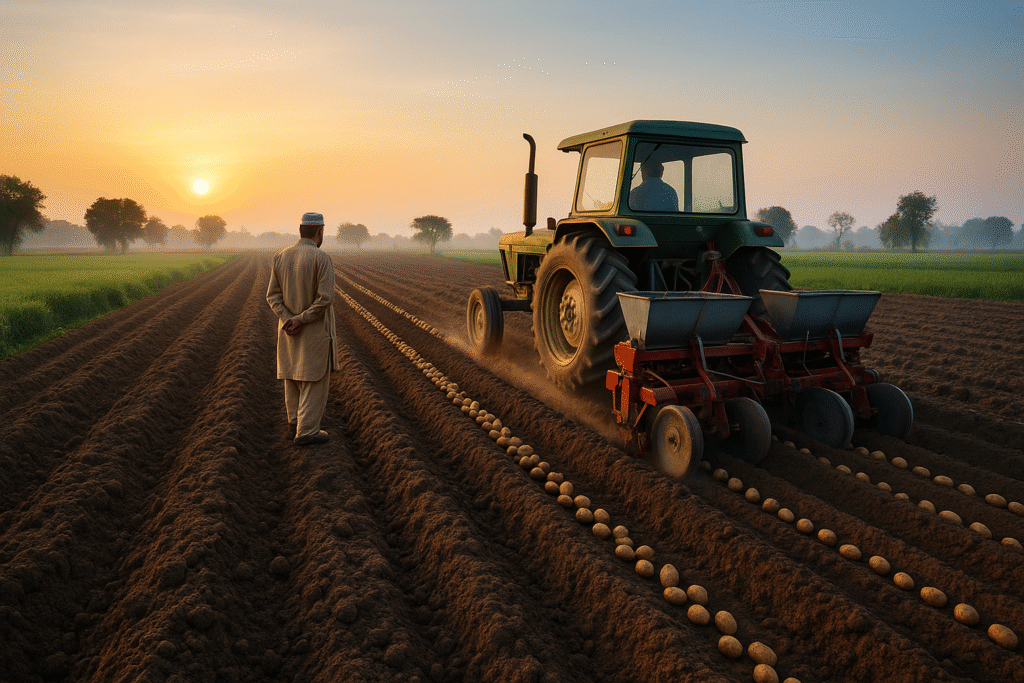Major Crops in Pakistan: Full Overview of Production, Value & Challenges in 2025
Major crops in Pakistan form the backbone of the country’s agriculture sector, which employs more than 37% of the labor force and contributes about 19% to the GDP. Pakistan’s climate, irrigation system, and diverse soil types support the cultivation of a variety of food and cash crops throughout the year. As we move into 2025, understanding the trends, yields, and issues surrounding these crops is crucial for farmers, policymakers, and agribusiness stakeholders.
1. 🌾 Wheat – Pakistan’s Lifeline Crop
Wheat is the most cultivated crop in Pakistan and the primary staple for the population. In 2024–25, wheat was grown on approximately 9.1 million acres, yielding around 26.5 million metric tons. Punjab leads in wheat production, contributing over 75% of the national total.
Farmers usually sow wheat in November–December, and harvesting takes place between April and May. New rust-resistant and high-yielding varieties are being promoted to meet rising domestic demand.
🔗 Internal link: Wheat in Pakistan – Overview 2025
2. 🍚 Rice – A Key Export Crop
Rice ranks second among major crops in Pakistan and plays a vital role in export earnings. Around 3.1 million acres are under rice cultivation, primarily in Punjab and Sindh. Basmati varieties are in high demand internationally due to their aroma and long grains.
In 2024, Pakistan exported over $2.5 billion worth of rice. Kharif-season sowing begins in June, with harvesting in October.
🔗 External link: Pakistan Bureau of Statistics – Rice Exports
3. 🏭 Cotton – Textile Industry Backbone
Cotton, referred to as “white gold,” is vital for Pakistan’s textile industry, which accounts for 60% of national exports. Over 6.5 million acres were under cotton cultivation in 2024, primarily in Sindh and South Punjab.
Pakistan ranks among the top cotton-producing countries globally, but climate variability, pests like whitefly, and low seed quality continue to challenge growers.
🔗 External link: Pakistan Central Cotton Committee
4. 🍬 Sugarcane – Fueling Sugar and Bioethanol
Sugarcane covers around 1.1 million acres in Pakistan. It supports over 80 sugar mills and is also used in ethanol production. The crop is water-intensive and mostly grown in Sindh, KP, and Punjab. Planting happens in February–March, and harvesting runs from November to February.
The government aims to improve efficiency through better water use and high-sucrose content varieties.
5. 🌽 Maize – A Rising Star Among Major Crops
Maize has gained rapid popularity due to its short growing cycle and high profitability. In 2024, over 1.6 million acres were under maize, mostly in Punjab and KP. Hybrid varieties have pushed average yields above 80 maunds per acre, especially for silage and poultry feed.
🔗 Internal link: Maize Agronomy in Pakistan
6. 🌻 Oilseeds and Pulses
To reduce edible oil imports, Pakistan is promoting crops like sunflower, canola, and soybean. Similarly, lentils, chickpeas, and mung beans are grown to improve dietary diversity and soil health.
The government provides seed subsidies and awareness campaigns to boost cultivation in rainfed areas.
🌾 Challenges in Major Crop Production
- Water scarcity due to outdated irrigation systems
- Climate change and erratic monsoon patterns
- Low mechanization on smallholder farms
- Post-harvest losses due to poor storage
- Rising input costs (DAP, diesel, seeds)
🧠 Government & Stakeholder Efforts
To improve yield and profitability of major crops in Pakistan, the following steps are underway:
- Subsidized fertilizers and certified seeds
- Expansion of crop insurance programs
- Promotion of climate-smart agriculture
- Collaboration with research centers like PARC
✅ Conclusion: The Future of Major Crops in Pakistan
In 2025, major crops in Pakistan continue to anchor the economy and food system. With modern inputs, digital advisory services, and climate adaptation strategies, Pakistan can boost production, reduce imports, and ensure food security. From wheat fields to cotton rows, every acre counts in shaping the country’s agricultural resilience.
